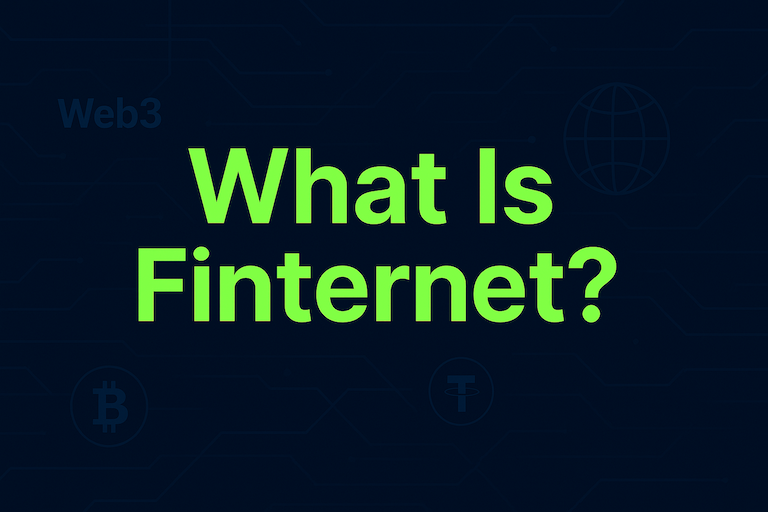What is Proof of Authority?
Jan 26, 2025
Proof of Authority (PoA) is an innovative consensus mechanism used in blockchain networks that prioritises identity over computational power. Unlike Proof of Work or Proof of Stake, PoA relies on a select group of trusted validators who are authorised to maintain the network. This blog post explores how PoA operates, its benefits, and its challenges, providing a comprehensive understanding of this mechanism. By the end, readers will gain insights into how PoA enables fast and efficient transaction validation, its use cases, and its potential impact on blockchain technology. Dive in to uncover the details of this alternative to traditional blockchain consensus models.
Understanding Proof of Authority
Proof of Authority (PoA) is a consensus mechanism that relies on a limited number of validators, who are pre-approved to maintain the blockchain. These validators use their identity and reputation to secure the network rather than staking assets or solving complex mathematical problems. This approach ensures faster transaction processing and reduces the computational burden often associated with other methods like Proof of Work.
PoA validators are selected based on their credibility and willingness to adhere to strict guidelines. Their identities are typically verified to ensure accountability, making this mechanism particularly appealing for private or consortium blockchains. The deterministic nature of PoA allows for predictable and efficient block generation, avoiding delays caused by competition or random selection. Moreover, its reliance on a smaller set of validators significantly reduces energy consumption compared to Proof of Work.
Advantages of Proof of Authority
Proof of Authority offers several advantages that make it suitable for specific applications, particularly in private and permissioned blockchain networks. One of its standout benefits is its ability to achieve high transaction throughput, as only a few authorised validators are involved in block production. This streamlined process eliminates the need for complex calculations or large-scale asset staking.
Another advantage of PoA is its energy efficiency. Since there is no reliance on intensive computational tasks, the environmental impact is significantly reduced. This makes PoA an appealing choice for organisations that prioritise sustainability. Additionally, PoA’s predictable block generation allows for a stable and consistent network performance, ensuring reliable transaction processing.
The emphasis on validator identity and accountability enhances trust within the network. Unlike other consensus mechanisms where anonymous participants can act maliciously, PoA validators are known and vetted, reducing the risk of fraudulent activities. However, these advantages come with trade-offs, such as reduced decentralisation.
Challenges and Criticisms of Proof of Authority
Despite its advantages, Proof of Authority is not without its challenges. One of the primary criticisms is the lack of decentralisation. Since PoA relies on a small number of validators, it introduces a degree of centralisation that can conflict with the core principles of blockchain technology. This centralised nature makes the network vulnerable to potential collusion or manipulation by validators.
Another challenge is the dependency on validator reputation. While transparency and accountability are strengths, they also mean that validator identities are exposed, which can lead to privacy concerns or external pressures. Moreover, the strict vetting process for validator selection can create barriers to entry, limiting participation and innovation within the network.
PoA’s suitability is often confined to private or permissioned blockchains, making it less adaptable for public blockchain networks where decentralisation is paramount. Additionally, the network’s resilience can be questioned, as reliance on a small group of validators might result in single points of failure. Balancing these trade-offs is crucial for effectively implementing PoA in real-world scenarios.
Use Cases of Proof of Authority
Proof of Authority is particularly suited to use cases where speed, efficiency, and trust are critical. Many organisations and consortiums prefer PoA for private blockchain applications due to its ability to deliver high performance without compromising security. It is often used in supply chain management systems, where transparency and accountability are essential for tracking goods across multiple stakeholders.
Another common application of PoA is in identity management systems. By leveraging the identity verification process, PoA networks can ensure secure and reliable user authentication. The energy efficiency of PoA also makes it attractive for financial systems that require high transaction volumes, such as payment gateways or interbank settlement platforms.
Furthermore, PoA’s deterministic block generation is advantageous for real-time data sharing applications, including healthcare or logistics. Its ability to maintain trust among known participants fosters collaboration within consortia and reduces the risk of disputes. However, these use cases often require careful consideration of the trade-offs between centralisation and decentralisation.
Conclusion
Proof of Authority is a unique consensus mechanism that prioritises identity and trust over computational power or asset staking. Its ability to deliver high performance, energy efficiency, and accountability makes it a compelling choice for specific blockchain applications. However, the trade-offs, such as reduced decentralisation and potential vulnerabilities, must be carefully addressed to ensure its effectiveness.
Start your safe cryptocurrency journey now
Fast and secure deposits and withdrawals, OSL safeguards every transaction !


